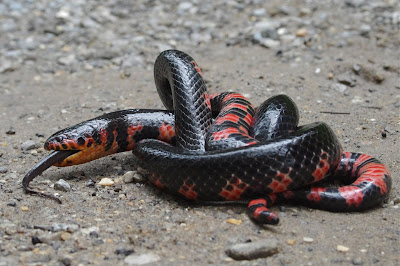When people think of nocturnal birds, owls are usually the first, and often the only birds that come to mind. In addition to owls, birds from the family Caprimulgidae add their voices to the fascinating tapestry of night time sounds. There are two species that breed in the Florida panhandle.

Female Common Nighthawk (
Chordeiles minor) incubating eggs
This video shows the rapid throat movements (gular fluttering) in the nighthawk's throat that help her stay relatively cool in the heat of the day while incubating her eggs. Lesser nighthawks (
Chordeiles acutipennis) have apparently been observed sustaining this thermoregulatory behavior for eight hours a day on very hot days!

Common Nighthawk (
Chordeiles minor) eggs

Common Nighthawk (
Chordeiles minor) hatchling
Common Nighthawk (
Chordeiles minor) Fledgling

Female Chuck-will's-widow (
Caprimulgus carolinensis) incubating eggs

Chuck-will's-widow doing broken wing display and gaping when I approached her eggs

Chuck-will's-widow (
Caprimulgus carolinensis) eggs
Chuck-will's-widow (
Caprimulgus carolinensis) fledgling



















































